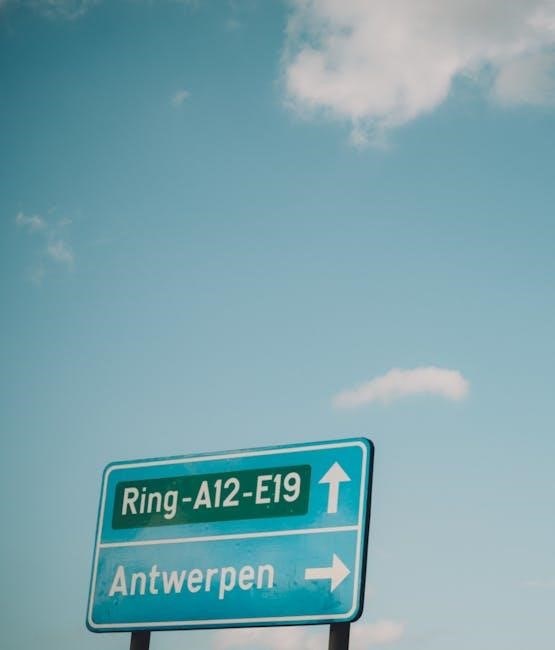This guide provides a detailed analysis of the 2002 film Crossroads, starring Britney Spears, to help parents determine its suitability for their children. It covers content ratings, mature themes, and key scenes, offering insights and tips for discussing sensitive topics.
Movie Overview
Crossroads is a 2002 American teen road comedy-drama film directed by Tamra Davis, written by Shonda Rhimes. The movie stars Britney Spears, Zoe Saldana, Taryn Manning, and Anson Mount. It follows three childhood friends—Lucy, Kit, and Mimi—who embark on a road trip to Los Angeles. Lucy seeks her estranged mother, Kit aims to surprise her fiancé, and Mimi pursues a music audition while dealing with a pregnancy resulting from rape. The film explores themes of friendship, love, and self-discovery, with a mix of music and personal growth. However, it also addresses mature topics like premarital sex and teen pregnancy, making it essential for parents to evaluate its suitability for younger audiences.
Content Rating
The 2002 film Crossroads is rated PG-13 for sexual content and brief teen drinking. The movie contains mild depictions of sex and nudity, including scenes of characters in underwear and implied premarital sex; Violence is minimal, with scenes like fighting in a bar and a character being punched. Profanity is present, with several mild obscenities and one strong profanity. Alcohol use is depicted, including underage drinking in a karaoke bar. The film also touches on sensitive topics like rape, teen pregnancy, and miscarriage. While the content is not excessively graphic, it addresses mature themes that may require parental discretion, especially for younger or more sensitive viewers.
Sexual Content
The film includes scenes of premarital sex, implied fornication, and discussions of rape and teen pregnancy. Characters are shown in underwear, and there are sexual innuendos throughout.
4.1 Premarital Sex
The film portrays premarital sex as a casual and acceptable choice, particularly through Lucy’s relationship with Ben. This is highlighted when Lucy loses her virginity during the road trip, emphasizing personal desire over traditional values. The narrative does not delve into the emotional or physical consequences of this decision, potentially normalizing it for young viewers. While the scene is not explicit, its implications may influence impressionable audiences. Parents should be aware of this storyline, as it could spark discussions about sexual choices and their real-life impacts.
4.2 Rape and Teen Pregnancy
The film addresses sensitive topics like rape and teen pregnancy through the character of Mimi, who becomes pregnant after being raped. While the storyline brings attention to these serious issues, it does not delve deeply into the emotional or psychological consequences. Mimi’s pregnancy is portrayed as a challenging situation, but the film does not explore the complexities of rape or its long-term effects. Parents should be prepared to discuss these mature themes with their children, as the movie may raise questions about consent, responsibility, and the realities of such experiences. The portrayal is handled with some sensitivity but lacks the depth needed for a meaningful conversation about these critical issues.
4.3 Virginity Loss
The film portrays Lucy losing her virginity during the road trip, a scene that is handled with minimal detail but still carries significant implications. The movie suggests that this decision is part of her journey toward independence and self-discovery. However, the narrative does not deeply explore the emotional or psychological aspects of this milestone, which may leave some viewers, particularly young audiences, without a nuanced understanding of its consequences. Parents may want to address this topic with their children, as the film’s depiction lacks the depth needed to fully grasp the importance and responsibility associated with such a decision. The scene is brief but marks a pivotal moment in Lucy’s character development.
4.4 Sexual Innuendos
The film includes several scenes with sexual innuendos, such as suggestive dialogue and implied intimacy. Lucy’s initial rejection of her lab partner’s advances is followed by her eventual decision to lose her virginity, which is portrayed as a natural progression of her journey. The movie also features characters discussing topics like pregnancy and relationships, adding to the mature themes. While these elements are not explicitly graphic, they contribute to the film’s PG-13 rating and may require parental discretion. The innuendos and discussions are woven into the storyline, reflecting the characters’ growth and personal struggles, but they also highlight the need for open conversations between parents and their children about these topics.
Violence and Gore
The film contains mild violence, including a bar fight and a scene where a character punches a man. These moments are brief and not excessively graphic.
5.1 Fighting Scenes
The film includes a notable bar fight scene where the characters engage in physical altercations. While not overly intense, this scene may concern some parents due to its depiction of violence. Additionally, there is a moment where a character teaches another how to punch, which could be seen as promoting aggression. However, these scenes are not prolonged or excessively graphic, aligning with the movie’s PG-13 rating. Parents should be aware of these moments when deciding if the content is appropriate for their child. The overall tone of the film balances these scenes with its themes of friendship and self-discovery.
5.2 Accidental Injuries
The film includes a scene where a character accidentally falls down stairs, which may raise concerns for some parents. Additionally, there is a moment where a girl punches a man in the face, though it is not overly graphic. These incidents are mild and brief, fitting within the movie’s PG-13 rating. While not excessively violent, they do contribute to the film’s mature themes. Parents should consider these scenes when evaluating the movie’s suitability for younger viewers. The overall tone remains focused on character development and relationships, balancing such moments with its central themes of friendship and growth.
Profanity
The film contains mild profanity, including about 17 light obscenities and one strong profanity referencing Jesus. While the language is not excessive, it may still be a concern for parents of younger or sensitive viewers. The profanity is scattered throughout the movie and is not central to the plot but does contribute to its PG-13 rating. Parents should be aware of these instances when deciding if the film is appropriate for their child. The language aligns with the movie’s teen-oriented themes but remains relatively restrained compared to other films in the same genre.

Alcohol, Drugs, and Smoking
The film includes scenes of underage alcohol use and characters drinking in a karaoke bar, contributing to its PG-13 rating. Smoking is also depicted, though not extensively. While drug use is not a major focus, it is briefly referenced. These elements, while mild, may still concern parents of younger viewers. The portrayal of alcohol and smoking aligns with the movie’s teen-oriented themes but does not glorify substance use. Parents should be aware of these scenes when assessing the film’s suitability for their child. The guide encourages parents to use these moments as opportunities for discussion about responsible behavior and the consequences of substance use.

Positive Messages
The film highlights themes of friendship, self-discovery, and family reconciliation, emphasizing the importance of personal growth and overcoming challenges. These messages promote resilience and the value of meaningful relationships.
8.1 Friendship
The film portrays the strong bond between three childhood friends, Lucy, Kit, and Mimi, who reconnect on a road trip. Their friendship is built on trust, loyalty, and mutual support, as they navigate personal struggles and misunderstandings. The story highlights how their relationship helps them overcome challenges, fostering a sense of unity and camaraderie. The characters’ interactions emphasize the importance of standing by one another, even during difficult times. This portrayal of friendship serves as a positive and uplifting message, showing how meaningful connections can lead to personal growth and understanding. The film celebrates the power of true friendship as a foundation for overcoming life’s obstacles.
8.2 Self-Discovery
The film explores themes of self-discovery as the characters navigate their personal journeys. Lucy, the protagonist, embarks on a road trip to find her estranged mother, which becomes a metaphor for her own identity search. Along the way, she learns to embrace her passions and confront her past. Similarly, her friends, Mimi and Kit, face their own struggles, such as dealing with pregnancy and questioning life choices. The story highlights how self-discovery is a process of growth, where characters learn to let go of fears and embrace their true selves. This theme encourages young viewers to reflect on their own paths and the importance of understanding themselves.
8.3 Family Reconciliation
The film touches on family reconciliation through Lucy’s journey to reconnect with her estranged mother, who abandoned her as a child. This subplot highlights the emotional challenges of rebuilding trust and understanding within families. Lucy’s decision to seek out her mother, despite past hurts, shows the complexity of family relationships and the desire for closure. The story emphasizes the importance of forgiveness and the possibility of healing, even in the face of long-standing conflicts. While the resolution is not overly simplistic, it encourages viewers to consider the value of family bonds and the effort required to mend them. This theme provides a meaningful message for young audiences about the importance of family reconciliation.

Parental Concerns
Parents should be aware of several concerns in Crossroads, including its mature themes and content. The film addresses premarital sex, teen pregnancy, and rape, which may not be suitable for younger audiences. Additionally, there are scenes involving mild profanity, alcohol use, and some violence. The movie’s Romantic worldview encourages following personal dreams over parental advice, which could influence impressionable teens. While the film promotes positive messages about friendship and self-discovery, its handling of sensitive topics may require parental guidance. Parents are advised to preview the film or have open discussions with their children to address any questions or concerns arising from the content.
Target Audience
Crossroads primarily targets a teenage audience, focusing on themes of friendship, self-discovery, and romantic experiences. The film’s relatable characters and coming-of-age story appeal to older children and teenagers, particularly young women, who may identify with the protagonists’ journeys. However, due to its mature content, including discussions of premarital sex, teen pregnancy, and mild profanity, the movie is more suitable for older teens. Parents should consider their child’s maturity level before allowing them to watch, as the film’s themes and content may not be appropriate for younger or more sensitive viewers. The movie’s mix of drama, music, and road trip adventures also attracts fans of teen-oriented films and Britney Spears enthusiasts.

Comparisons to Other Teen Movies
Crossroads shares similarities with other teen movies of its era, such as Clueless and The Sisterhood of the Traveling Pants, in its focus on female friendships and self-discovery. However, its tone and themes are more aligned with films like Thelma & Louise, emphasizing a road trip narrative and personal growth. Unlike some teen comedies, Crossroads tackles heavier issues like teen pregnancy and family reconciliation, giving it a more dramatic edge. While it lacks the depth of more critically acclaimed teen films, its blend of music, relatable characters, and coming-of-age themes makes it a classic early 2000s teen drama. The film’s appeal lies in its ability to balance lighthearted moments with serious topics, making it a memorable entry in the teen movie genre.

Tips for Parents
Encourage open discussions about sensitive topics like premarital sex and family issues. Guide your child through mature themes and use the film as a teaching moment for real-life conversations.
12.1 Discussion Tips
Encourage open dialogue about the film’s themes, such as premarital sex, rape, and family reconciliation. Ask your child to share their thoughts on the characters’ decisions and consequences. Focus on specific scenes, like Mimi’s pregnancy or Lucy’s search for her mother, to spark meaningful conversations. Discuss how the characters’ choices align with your family’s values. Emphasize the importance of empathy and understanding in relationships. Highlight the positive messages, such as friendship and self-discovery, while addressing the film’s mature content. Use this opportunity to share your own experiences and guide your child in developing a critical perspective on the movie’s themes.
12.2 Guidance on Sensitive Topics
Address sensitive topics in Crossroads with care, ensuring your child understands the implications. Discuss the consequences of premarital sex and the emotional impact of rape and teen pregnancy. Highlight the importance of consent and healthy relationships. Use scenes like Lucy’s virginity loss to talk about personal boundaries and responsible decision-making. Emphasize the seriousness of underage drinking and its portrayal in the film. Guide your child in critically evaluating the film’s Romantic worldview, which may encourage rebellion against parental advice. Encourage them to question how following dreams responsibly can coexist with respecting family values. Foster a safe environment for open discussion, ensuring your child feels supported in understanding these complex issues.
In conclusion, Crossroads is a film that balances heartfelt moments of friendship and self-discovery with mature themes that require parental discretion. While it offers positive messages about loyalty and personal growth, its depiction of premarital sex, teen pregnancy, and underage drinking makes it essential for parents to guide their children through its content. The film’s Romantic worldview may encourage young viewers to question authority, emphasizing the need for open discussions about responsibility and family values. By using this guide, parents can help their children navigate the film’s complex themes and ensure a meaningful viewing experience that fosters understanding and critical thinking.
Additional Resources
For further insights, parents can explore Movieguide.org, which offers detailed content analyses and moral evaluations of films like Crossroads. Additionally, Common Sense Media provides parent reviews and age recommendations. The film’s official website and platforms like IMDb also offer summaries and user discussions. These resources help parents make informed decisions about their child’s viewing experience. By utilizing these tools, families can engage in meaningful conversations about the film’s themes and content, ensuring a thoughtful and guided approach to media consumption.

Worldview and Themes
Crossroads presents a Romantic worldview, emphasizing following dreams over parental advice, with moral elements like friendship and self-discovery, but also promoting premarital sex and a rebellious attitude.
15.1 Romantic Worldview
The film Crossroads promotes a Romantic worldview, encouraging characters to follow their dreams and desires, often disregarding parental guidance. This perspective is central to the story, as Lucy and her friends embark on a journey of self-discovery and independence. While the movie highlights themes of friendship and personal growth, its emphasis on rebellion and making choices without parental input raises concerns. The narrative suggests that pursuing one’s aspirations, even if it means defying authority, is the key to happiness. However, this worldview also leads to morally questionable decisions, such as the normalization of premarital sex and a lack of accountability for personal actions. Parents should be aware of these themes and their potential influence on young viewers.
15.2 Moral Elements
While Crossroads explores themes of friendship and self-discovery, its moral elements are mixed. The film portrays a positive father figure in Dan Aykroyd’s character, offering guidance and support. However, it also promotes a rebellious attitude toward parental authority, encouraging characters to follow their desires without accountability. The movie’s handling of sensitive topics like premarital sex and teen pregnancy raises concerns, as it often normalizes these actions without addressing their consequences. Despite its focus on personal growth, the film’s moral framework is inconsistent, blending uplifting messages with questionable choices. Parents should be cautious about the moral lessons their children might take away from this narrative.

The Role of Music
Music plays a significant role in Crossroads, both as a narrative device and a character development tool. Britney Spears’ character, Lucy, discovers her singing talent during the road trip, which becomes a pivotal moment in her self-discovery journey. The film features several of Spears’ songs, including the hit single “I’m Not a Girl, Not Yet a Woman,” which resonates with the movie’s themes of identity and growth. While the music enhances the emotional depth of the story, some songs contain suggestive lyrics that may raise concerns for parents. The soundtrack, however, aligns with the film’s teen-oriented appeal, blending pop and inspirational tracks to reflect the characters’ experiences and aspirations.
Cultural Impact
Crossroads holds a notable place in early 2000s pop culture, particularly for its association with Britney Spears’ rise as a global icon. The film’s mix of music, road trip adventure, and teen drama resonated with young audiences, making it a cultural touchstone for many who grew up in that era. While the movie received mixed reviews, its impact lies in its ability to connect with teenagers through relatable themes of self-discovery and friendship. Spears’ involvement further amplified its appeal, blending her music career with her acting debut. However, critics argued that the film’s portrayal of mature themes and its Romantic worldview could influence impressionable viewers. Despite this, Crossroads remains a nostalgic reminder of the early 2000s teen movie era, reflecting the cultural shift in entertainment targeting young audiences. Its legacy is tied to Spears’ enduring image as a pop culture phenomenon.
Cast and Characters
The film Crossroads features a diverse cast, with Britney Spears making her acting debut as Lucy, a high school valedictorian. Zoe Saldana plays Kit, Lucy’s childhood friend, while Taryn Manning portrays Mimi, a pregnant teenager dealing with the aftermath of rape. Anson Mount stars as Ben, a mysterious musician who joins the trio on their road trip. Veteran actors Kim Cattrall and Dan Aykroyd also appear, with Aykroyd playing Lucy’s father, offering a positive paternal influence. The cast brings depth to the story, exploring themes of friendship, identity, and reconciliation. Their performances, while not universally praised, contribute to the film’s emotional journey and its appeal to young audiences.
Director’s Influence
Tamra Davis directed Crossroads, bringing her experience in music videos to the film, which complements Britney Spears’ involvement. Davis focused on blending emotional drama with a road trip adventure, emphasizing themes of self-discovery and friendship. While the film received mixed reviews, Davis’ direction aimed to appeal to a young audience, aligning with Spears’ fanbase. The screenplay, written by Shonda Rhimes, was criticized for its meandering plot but still delivered a story that resonated with teens. Davis’ approach highlighted the bond between the characters, making their journey relatable and engaging for viewers seeking stories about empowerment and growth. Her influence ensured the film remained true to its teen drama roots, blending music and personal struggles effectively.

Historical Context
Crossroads, released in 2002, marked Britney Spears’ film debut, aligning with her peak as a pop icon. Directed by Tamra Davis, the movie reflects early 2000s teen culture, blending road trip adventures with self-discovery themes. The film’s release coincided with a surge in teen-oriented movies, catering to young audiences. Spears’ involvement drew significant attention, given her massive fanbase. The movie’s storyline, focusing on friendship and identity, resonated with its target demographic. While criticized for its romantic worldview and mature themes, Crossroads remains a nostalgic piece of early 2000s cinema, offering insights into the era’s entertainment trends and the cultural impact of its star.

Final Thoughts
Crossroads is a film that blends teen drama with road trip adventures, offering a mix of relatable themes and mature content. While it provides positive messages about friendship and self-discovery, parents should be cautious due to its handling of premarital sex, rape, and teen pregnancy. The movie’s PG-13 rating is appropriate, but its suitability for younger audiences depends on individual values and sensitivity levels. Parents are encouraged to watch the film with their children and use it as a tool for open discussions about its themes. Balancing its entertainment value with its mature elements, Crossroads can serve as a starting point for meaningful conversations about life’s challenges and moral choices.